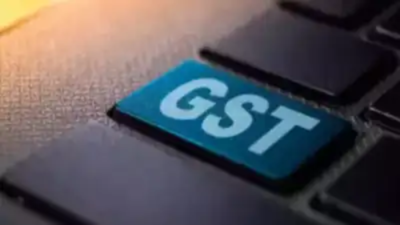ARTICLE AD BOX

The Centre is set to push for a 5 per cent tax on electric vehicles (EVs) as part of its ambitious overhaul of the Goods and Services Tax (GST) that seeks to lower tax rates on daily-use items ranging from butter to electronics.
The all-powerful GST Council, chaired by Union Finance Minister Nirmala Sitharaman and comprising finance ministers from all states, will take up the proposal in a two-day meeting beginning Wednesday.The Centre’s ‘next-gen’ GST reform plan aims to simplify the existing four-tier structure into just two slabs of 5 and 18 per cent, moving most goods from the current 12 and 28 per cent brackets to lower rates. A special 40 per cent rate has also been proposed for select demerit goods, PTI reported.While the pruning of tax slabs and the expected fall in consumer prices have been broadly welcomed, opposition-ruled states are pressing for compensation to make up for potential revenue shortfalls from the rejig.The GST regime, implemented on July 1, 2017, replaced a patchwork of state and central taxes with a uniform structure of 5, 12, 18 and 28 per cent. To cover state revenue losses, a compensation cess ranging from 1 to 290 per cent was levied on luxury and demerit items.
This mechanism ended in June 2022, leaving states more exposed to revenue volatility.Prime Minister Narendra Modi, in his Independence Day address on August 15, unveiled the plan for a major GST reform. The Centre soon shared a blueprint with a Group of Ministers (GoM) from different states, which broadly agreed to abolish the 12 and 28 per cent slabs to reduce the burden on consumers. The GoM’s recommendations will now be formally taken up by the Council on September 3 and 4.Sources told news agency PTI that the GoM, while supporting a slab restructuring, recommended that EVs priced up to Rs 40 lakh should attract 18 per cent GST. The Centre, however, remains firm on pushing a 5 per cent levy to encourage adoption, and will advocate for this at the Council meeting.If approved, common-use food items such as ghee, nuts, bottled drinking water, namkeen, medicines, medical devices, certain footwear and apparel could shift from 12 per cent to 5 per cent GST.
Everyday goods like pencils, bicycles, umbrellas and hairpins may also move to the 5 per cent bracket.Prices of electronic goods, including specific categories of TVs, washing machines and refrigerators, could fall as they move from 28 per cent to 18 per cent tax. Automobiles, currently taxed at 28 per cent plus cess, may see differential rates, with entry-level cars taxed at 18 per cent and SUVs and luxury cars at 40 per cent.The proposed 40 per cent rate will also cover demerit goods such as tobacco, pan masala and cigarettes, with scope for an additional levy on top of this. Opposition states like West Bengal have demanded that any additional levy on these items be earmarked exclusively for state compensation.Eight opposition-ruled states – Himachal Pradesh, Jharkhand, Karnataka, Kerala, Punjab, Tamil Nadu, Telangana and West Bengal – are expected to meet ahead of the Council session to finalise their strategy.
They argue that fewer slabs and lower rates will hit their revenues, while the Centre contends that lower prices will spur consumption and offset most of the loss over time.Sources said the Centre is also mindful of revenue implications but insists that the proposed GST revamp will minimise disruption while reducing compliance burdens for businesses. Nearly 99 per cent of items currently under the 12 per cent slab are expected to shift to 5 per cent, while 90 per cent of items in the 28 per cent slab will move to 18 per cent.



.png)
.png)
.png)
















 5 hours ago
2
5 hours ago
2









 English (US) ·
English (US) ·